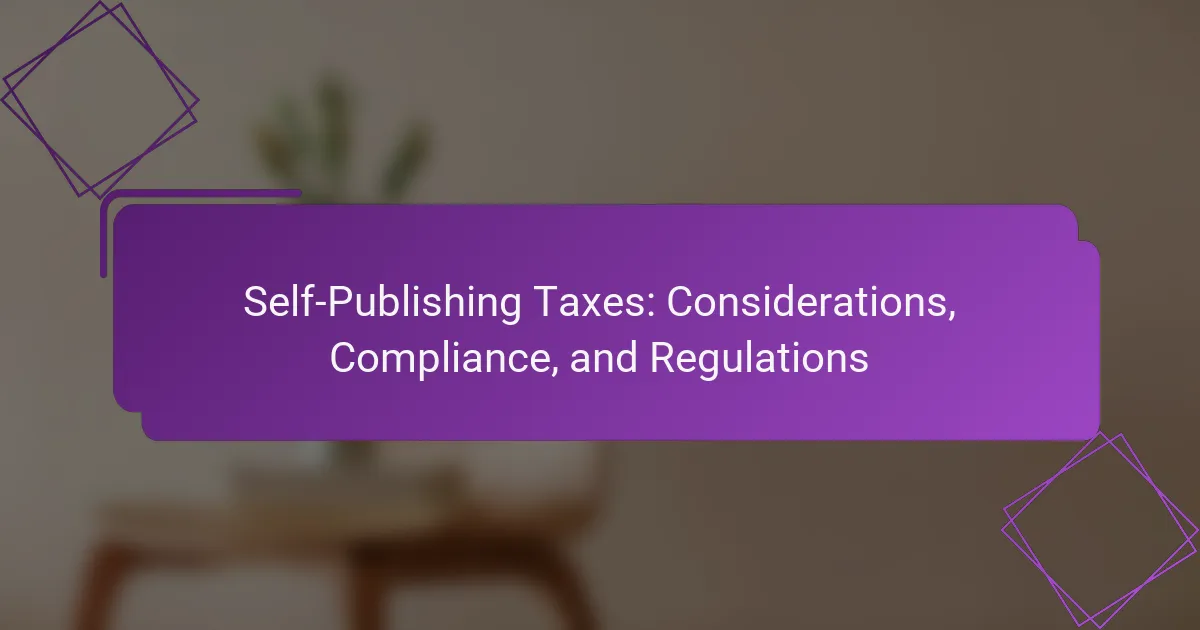Planning a self-publishing budget is crucial for first-time authors, as it helps identify and allocate funds for all potential costs associated with bringing a book to market. Key expenses such as editing, cover design, and marketing can significantly impact the quality and visibility of your work, making it essential to prioritize these areas. By understanding and budgeting for these costs, you can avoid unexpected financial burdens and set your book up for success.
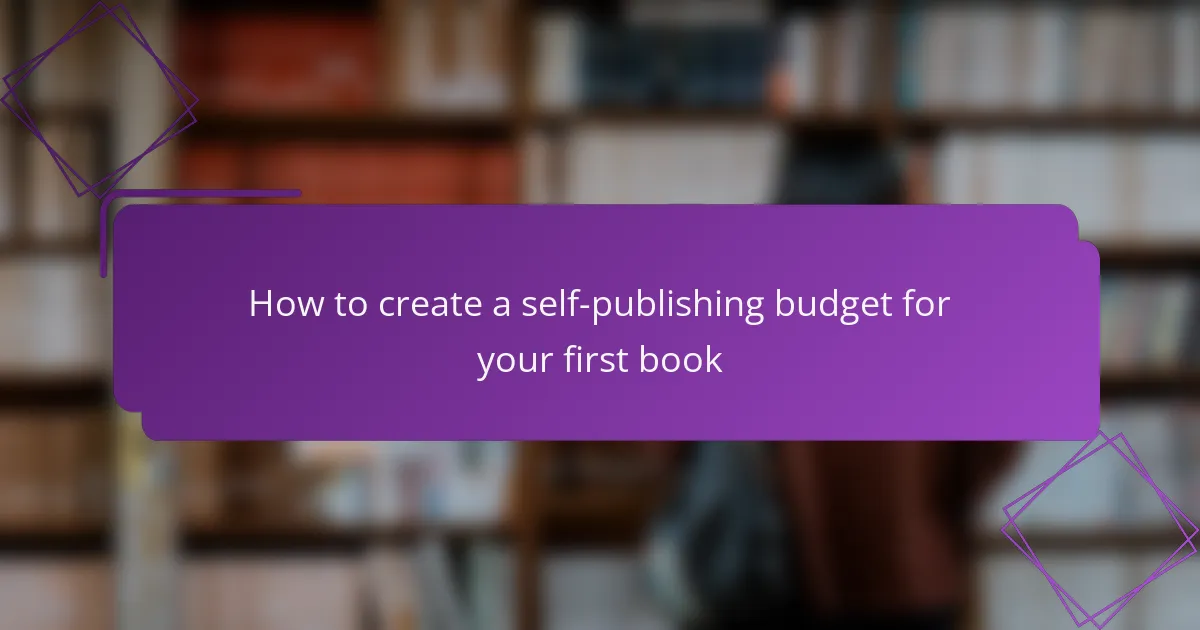
How to create a self-publishing budget for your first book
Creating a self-publishing budget involves identifying all potential costs associated with publishing your book. This budget will help you allocate funds effectively and avoid unexpected expenses during the process.
Identify key expenses
Start by outlining the primary expenses you will incur during self-publishing. Common costs include editing, design, printing, and marketing. By listing these expenses, you can gain a clearer picture of your overall budget.
Consider using a spreadsheet to track these costs, allowing you to adjust as needed. This will help you stay organized and ensure you don’t overlook any crucial expenses.
Estimate printing costs
Printing costs can vary significantly based on factors like book size, page count, and print quality. For a standard paperback, expect to pay anywhere from a few dollars to over ten dollars per copy, depending on these variables.
Research different printing options, such as print-on-demand services or bulk printing, to find the best fit for your budget. Comparing quotes from multiple printers can help you save money.
Account for marketing expenses
Marketing is essential for reaching your audience and driving sales. Budget for promotional activities such as social media advertising, book launch events, and author website development. A reasonable starting point is to allocate 10-20% of your total budget for marketing.
Consider leveraging free or low-cost marketing strategies, such as social media engagement and email newsletters, to maximize your reach without overspending.
Include distribution fees
Distribution fees can impact your profits, so it’s crucial to factor them into your budget. If you plan to use platforms like Amazon Kindle Direct Publishing or IngramSpark, be aware of their fee structures, which can include setup fees and percentage cuts from sales.
Research various distribution channels to determine which ones align with your budget and goals. Some platforms may offer better royalties or lower fees, so compare options carefully.
Factor in editing and design
Quality editing and design are vital for a professional-looking book. Editing costs can range from a few hundred to several thousand dollars, depending on the level of service you choose. Similarly, cover design can vary widely, with prices typically starting around $100 and going up significantly for custom designs.
Investing in these areas can greatly enhance your book’s appeal and marketability. Consider obtaining quotes from multiple professionals to find a balance between quality and cost.
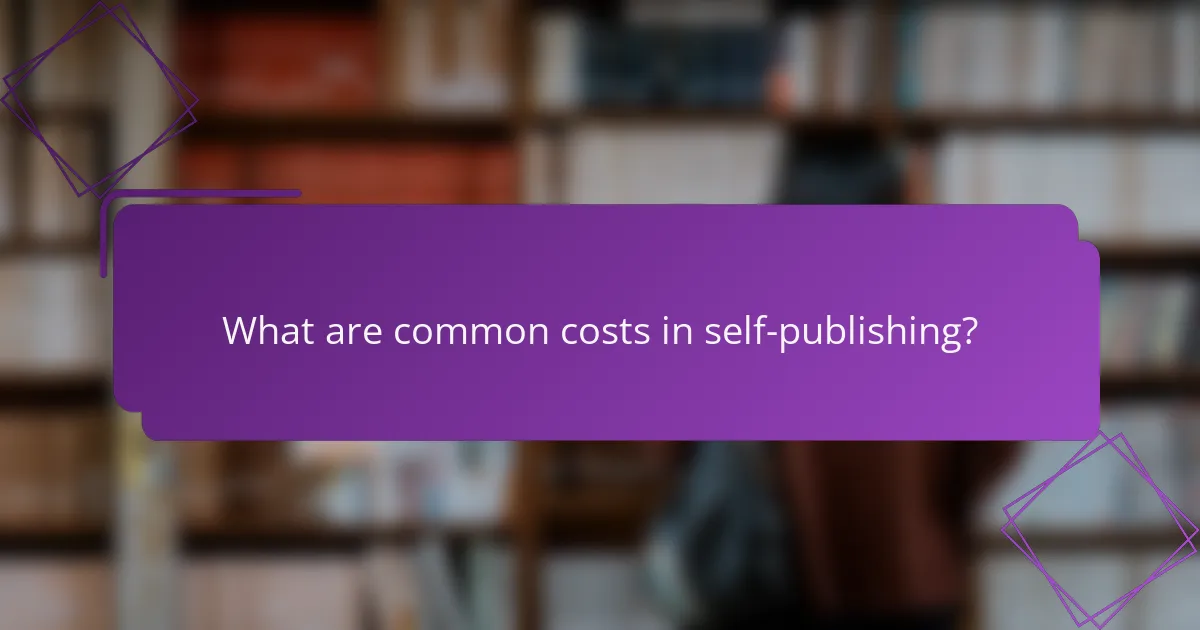
What are common costs in self-publishing?
Common costs in self-publishing include editing services, cover design, ISBN purchase, printing and shipping, and marketing and advertising. Understanding these expenses helps authors budget effectively for their first book.
Editing services
Editing is crucial for producing a polished manuscript. Authors typically invest in developmental editing, copyediting, and proofreading, which can range from a few hundred to several thousand dollars depending on the length and complexity of the book.
When selecting an editor, consider their experience and expertise in your genre. A well-edited book enhances readability and professionalism, increasing its chances of success in the market.
Cover design
A compelling cover design is essential for attracting readers. Professional cover designers may charge anywhere from $200 to over $1,500, depending on their reputation and the intricacy of the design.
Investing in a quality cover can significantly impact sales, as it is often the first impression potential readers have of your book. Ensure the design aligns with your genre and target audience.
ISBN purchase
An ISBN (International Standard Book Number) is necessary for selling your book through retailers and libraries. In the U.S., a single ISBN can cost around $125, while purchasing in bulk can reduce the price per unit.
Some self-publishing platforms offer free ISBNs, but owning your ISBN allows for greater control over your book’s rights and distribution. Weigh the pros and cons before deciding.
Printing and shipping
Printing and shipping costs vary based on the book’s format (e.g., paperback or hardcover) and quantity. Print-on-demand services can minimize upfront costs, allowing authors to print copies as needed.
Shipping costs depend on the destination and the number of copies ordered. It’s wise to research different printing options to find a balance between quality and affordability.
Marketing and advertising
Marketing and advertising are vital for promoting your book and reaching your audience. Budgets can range from a few hundred to several thousand dollars, depending on the strategies employed, such as social media ads, book signings, or promotional giveaways.
Consider starting with low-cost marketing strategies, like building an author website or engaging with readers on social media. As your budget allows, explore paid advertising options to expand your reach.
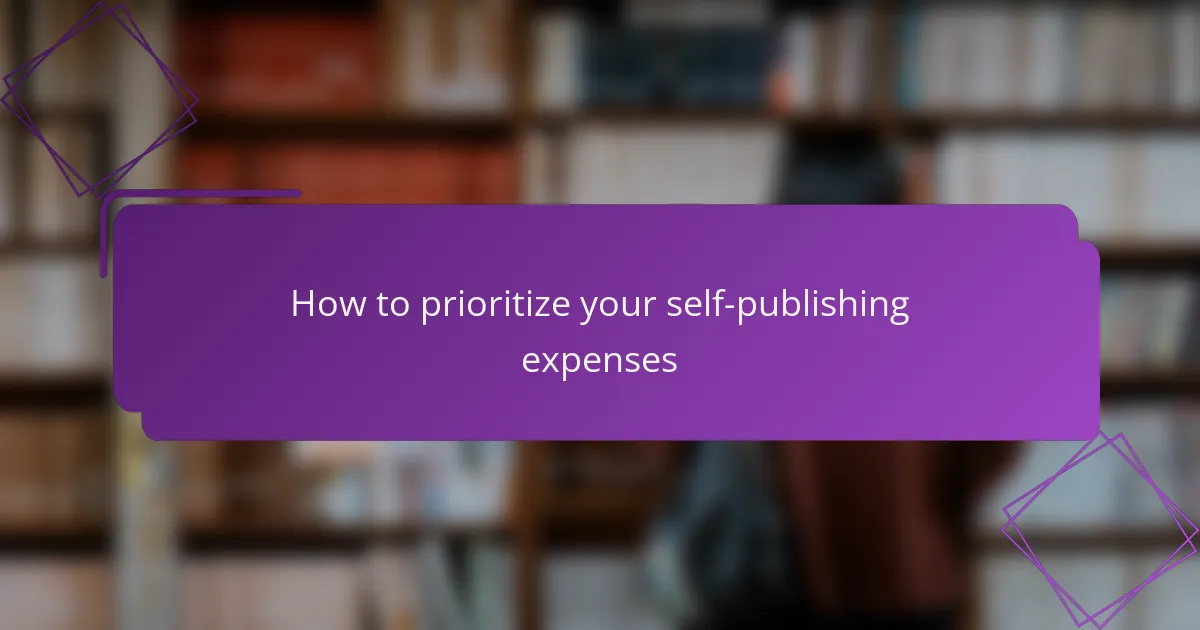
How to prioritize your self-publishing expenses
To effectively prioritize your self-publishing expenses, focus on essential areas that directly impact the quality and visibility of your book. Key expenses include editing, cover design, and marketing, which can significantly influence your book’s success.
Focus on quality editing
Quality editing is crucial for producing a polished manuscript. It typically involves developmental editing, copyediting, and proofreading, each serving a distinct purpose in refining your work. Expect to allocate several hundred to a few thousand dollars depending on the length and complexity of your book.
When selecting an editor, consider their experience in your genre and request samples of their previous work. A well-edited book not only reads better but also enhances your credibility as an author.
Invest in professional cover design
A professional cover design is essential as it is often the first impression potential readers will have of your book. A striking cover can attract attention and convey the genre and tone of your story. Budgeting between $300 to $1,500 for a quality cover design is common, depending on the designer’s expertise and the complexity of the artwork.
Choose a designer who understands market trends and can create a cover that stands out in your genre. Remember, a great cover can significantly boost your book’s sales potential.
Allocate budget for marketing
Marketing is vital for reaching your target audience and driving book sales. Allocate a portion of your budget for promotional activities, which can range from $100 to several thousand dollars depending on your strategy. Consider options like social media advertising, book launch events, and promotional giveaways.
Effective marketing requires planning and consistency. Start by identifying your target audience and exploring cost-effective methods like building an author website or engaging with readers on social media platforms. A well-executed marketing plan can greatly enhance your book’s visibility and sales.
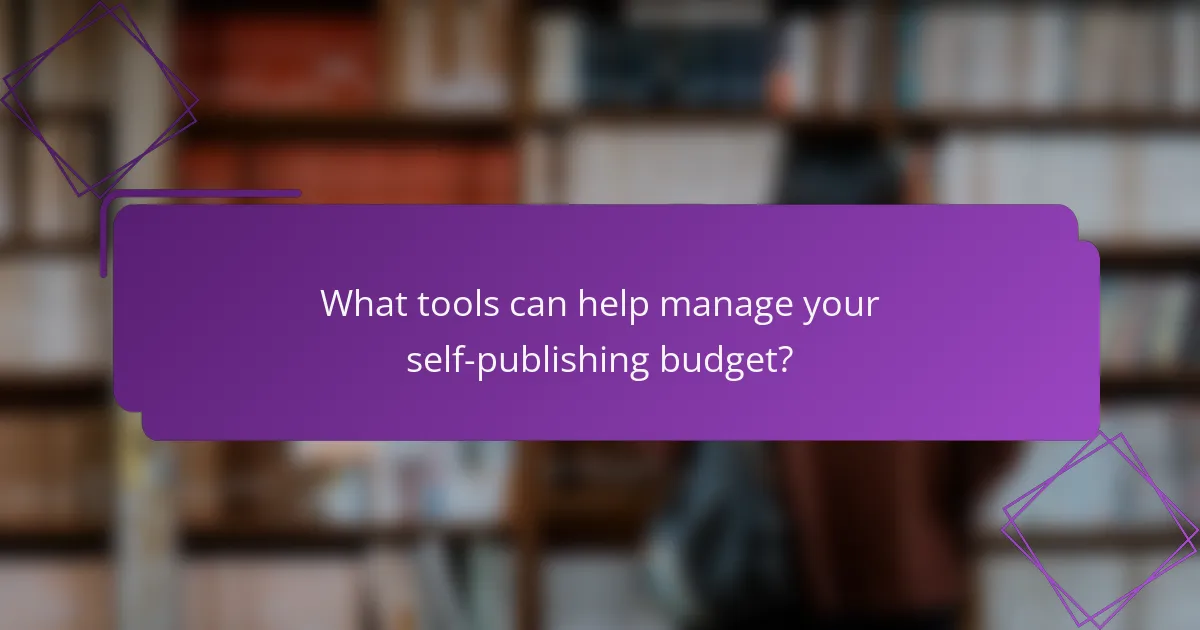
What tools can help manage your self-publishing budget?
Managing your self-publishing budget effectively requires the right tools to track expenses, plan costs, and ensure you stay within your financial limits. Utilizing budgeting software, spreadsheets, and project management tools can streamline this process and enhance your financial oversight.
Use budgeting software
Budgeting software can simplify the financial management of your self-publishing project by providing templates and features tailored for tracking income and expenses. Popular options like Mint, YNAB (You Need A Budget), or QuickBooks can help you categorize costs associated with editing, cover design, and marketing.
When choosing budgeting software, consider features such as expense tracking, reporting capabilities, and integration with your bank accounts. Many platforms offer free trials, allowing you to test their functionality before committing.
Track expenses with spreadsheets
Spreadsheets are a versatile tool for tracking your self-publishing expenses. Programs like Microsoft Excel or Google Sheets allow you to create customized budgets, categorize expenses, and perform calculations easily. You can set up columns for different cost categories such as editing, printing, and distribution.
To maximize effectiveness, consider using formulas to automatically calculate totals and track your budget against actual spending. Regularly updating your spreadsheet will help you stay on top of your finances and adjust your budget as necessary.
Utilize project management tools
Project management tools like Trello, Asana, or Monday.com can assist in organizing your self-publishing tasks while keeping budget considerations in mind. These platforms allow you to create tasks related to your budget, such as securing funds, paying for services, and tracking deadlines.
By integrating budget tracking into your project management workflow, you can ensure that financial goals align with your publishing timeline. Set reminders for payment deadlines and budget reviews to maintain control over your spending throughout the publishing process.


